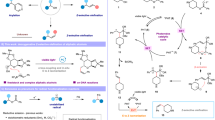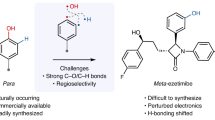Abstract
IN a previous communication1, it was suggested that the Astrogenic activity of crude specimens of anol and of the mother liquor from these preparations may be due to the presence of a polymer possessing an extremely high degree of potency. The active substance has been isolated by the following procedure:
This is a preview of subscription content, access via your institution
Access options
Subscribe to this journal
Receive 51 print issues and online access
$199.00 per year
only $3.90 per issue
Buy this article
- Purchase on SpringerLink
- Instant access to full article PDF
Prices may be subject to local taxes which are calculated during checkout
Similar content being viewed by others
References
Dodds, E. C., and Lawson, W., NATURE, 139, 1038 (1937).
Campbell, N. R., Dodds, E. C., and Lawson, W., NATURE, 141, 78 (1938).
Dodds, E. C., Golberg, L., Lawson, W., and Robinson, R., NATURE, 142, 34 (1938).
Dodds, E. C., Golberg, L., Lawson, W., and Robinson, R., NATURE, 141, 247 (1938).
Author information
Authors and Affiliations
Rights and permissions
About this article
Cite this article
CAMPBELL, N., DODDS, E. & LAWSON, W. Œstrogenic Activity of Anol; a Highly Active Phenol Isolated from the By-Products. Nature 142, 1121 (1938). https://doi.org/10.1038/1421121a0
Published:
Issue date:
DOI: https://doi.org/10.1038/1421121a0
This article is cited by
-
Die Kontrolle chemisch-kolorimetrisch bestimmter Follikelhormongehalte
Zeitschrift für Die Gesamte Experimentelle Medizin (1959)
-
Synthetic œstrogens in treatment
The Irish Journal of Medical Science (1950)
-
Zur Konfiguration der synthetischen Oestrogene
Die Naturwissenschaften (1940)
-
Über die isomeren 4,4′-Dioxy-γ, δ-diphenyl-n-hexene
Naturwissenschaften (1939)



